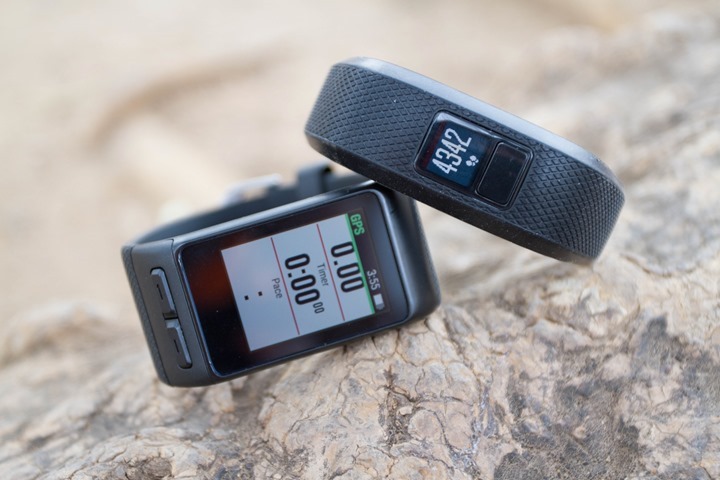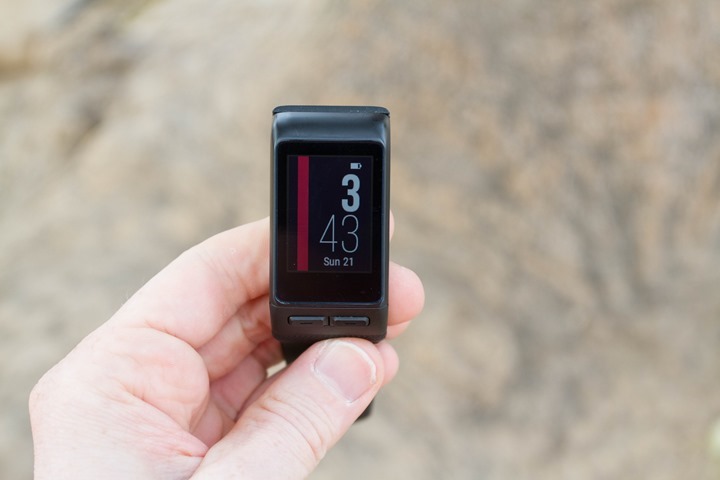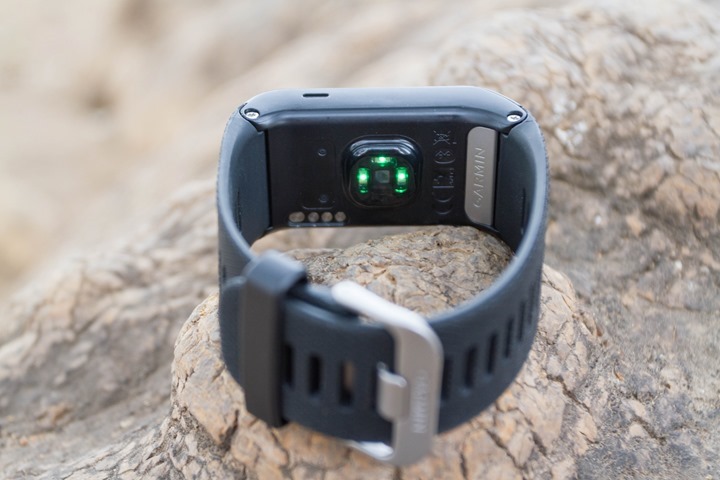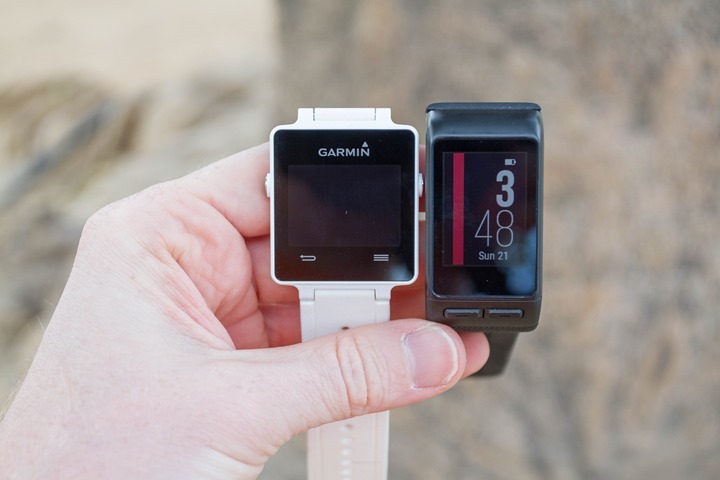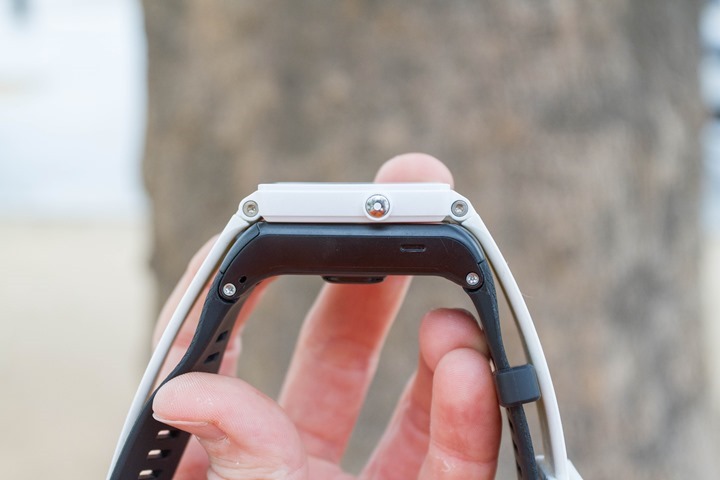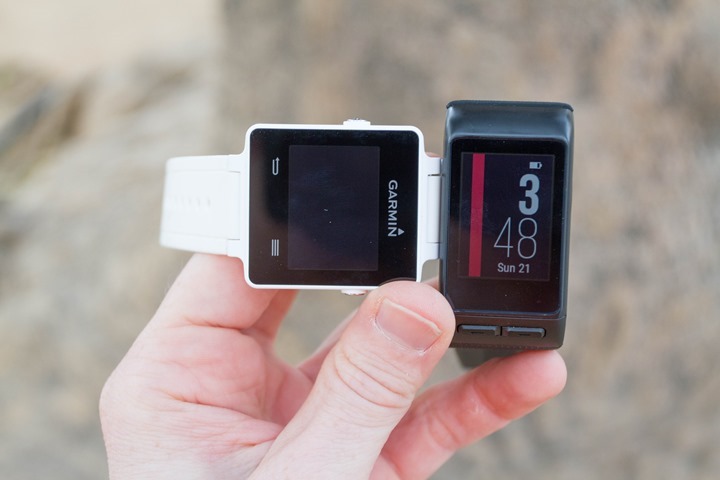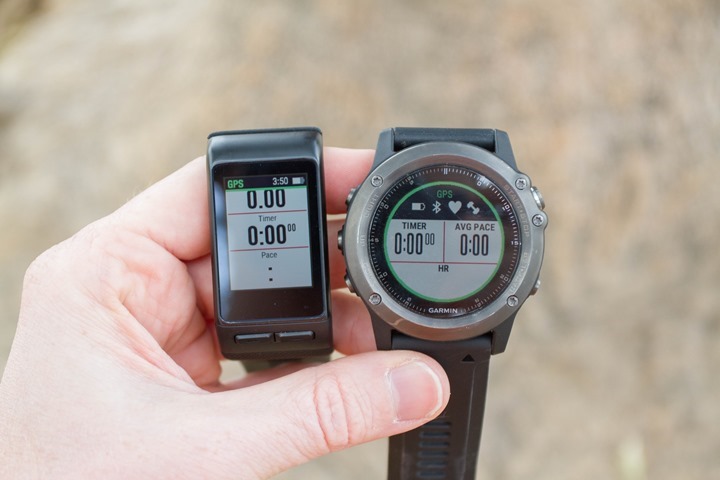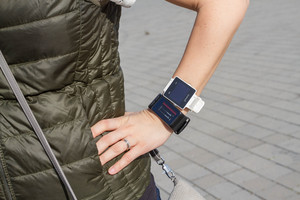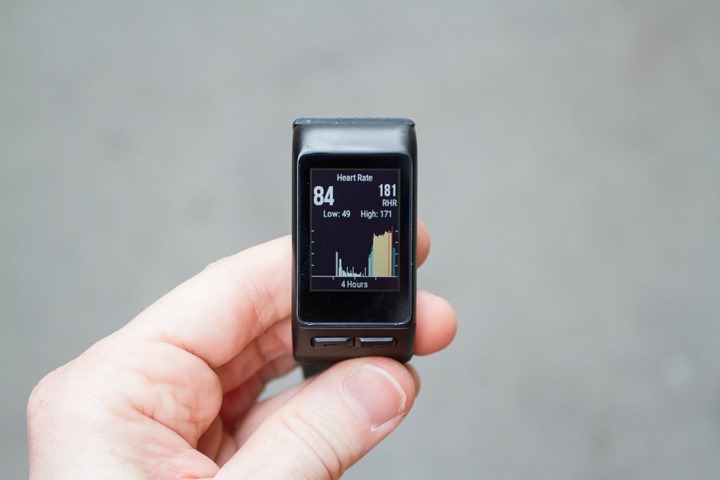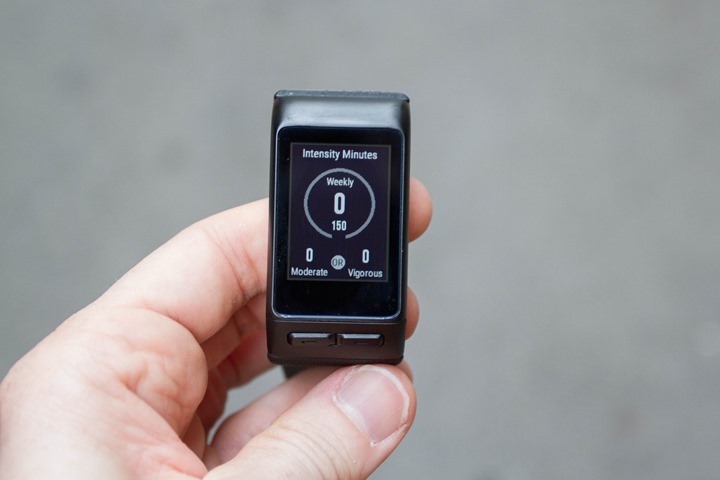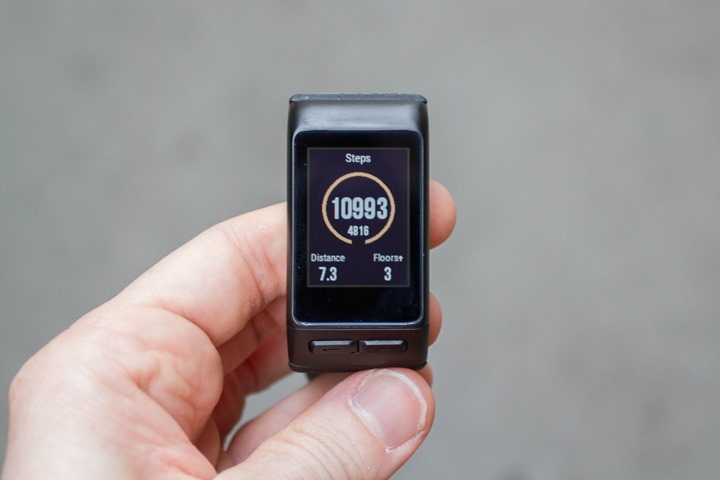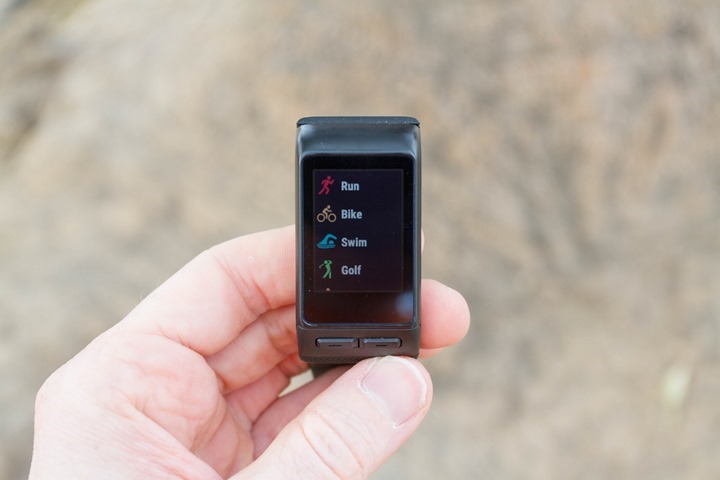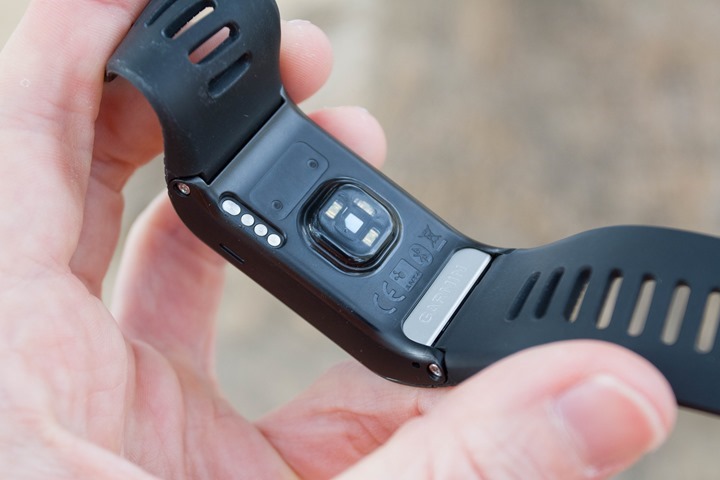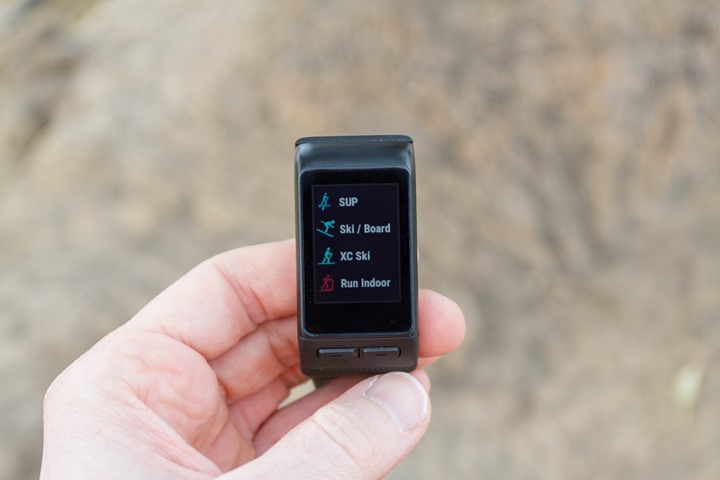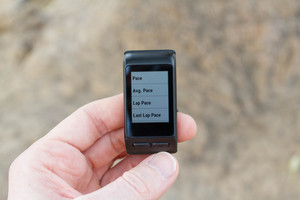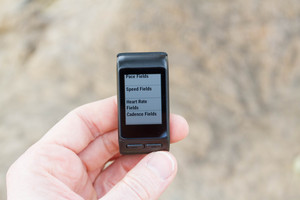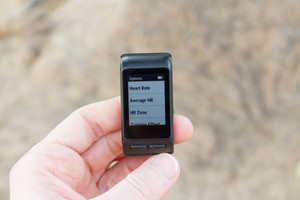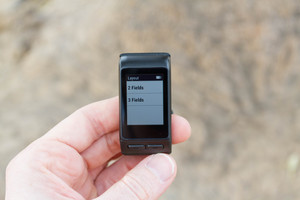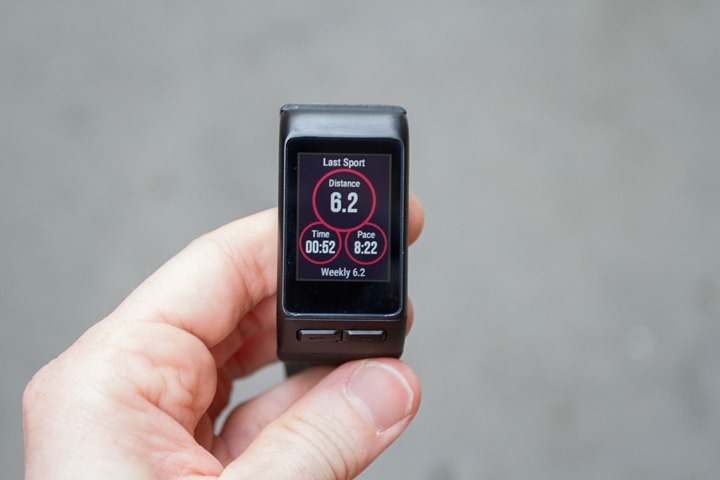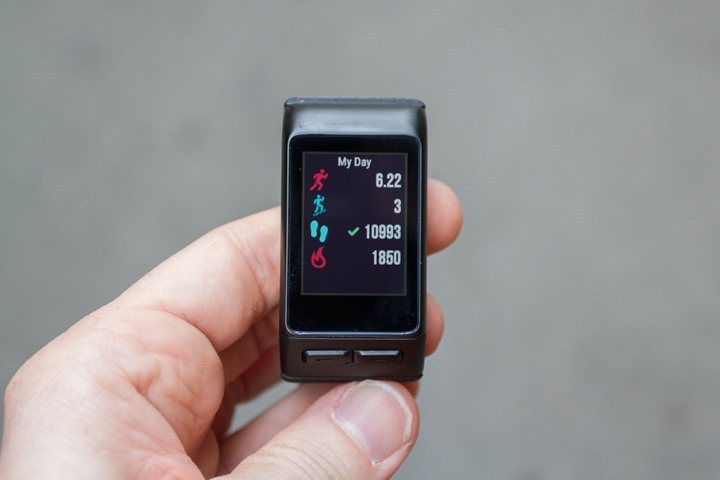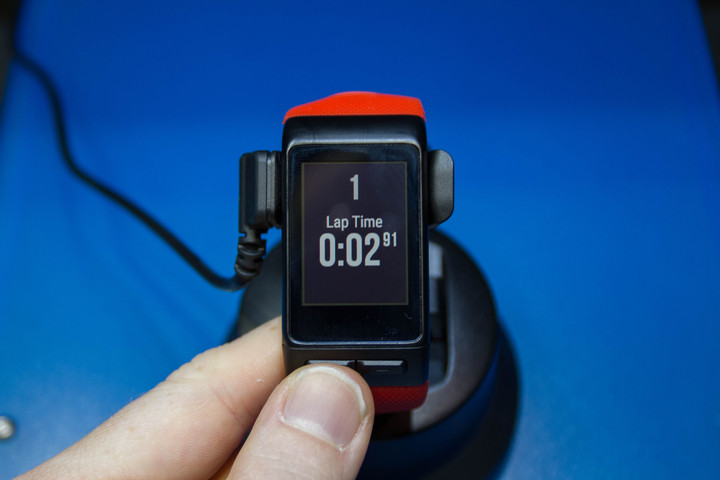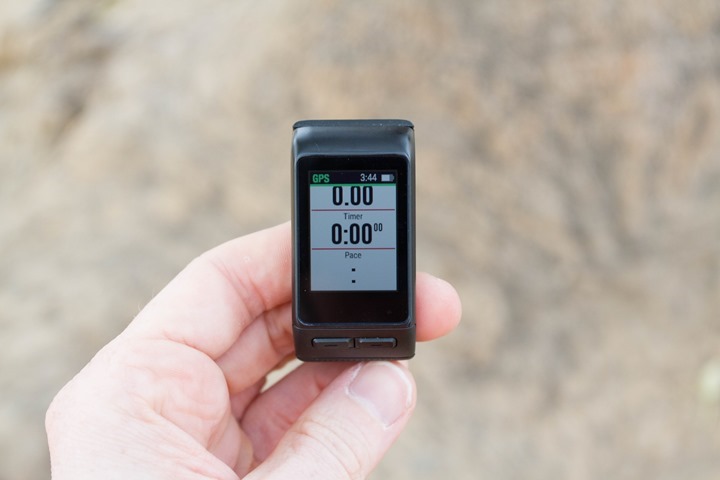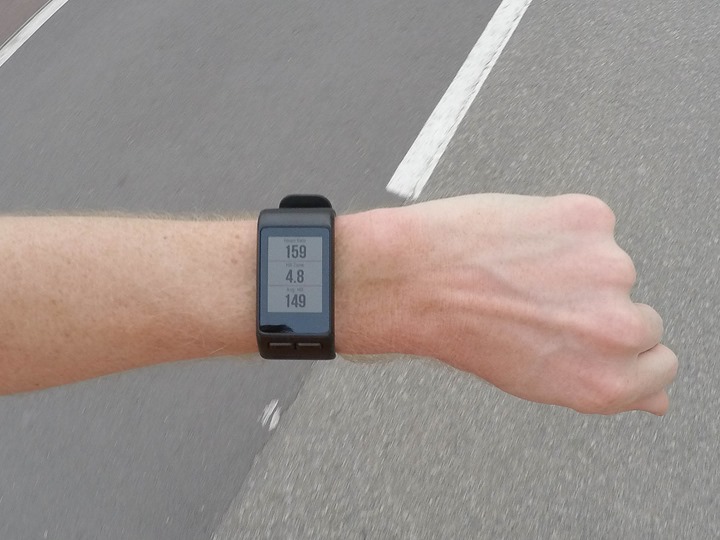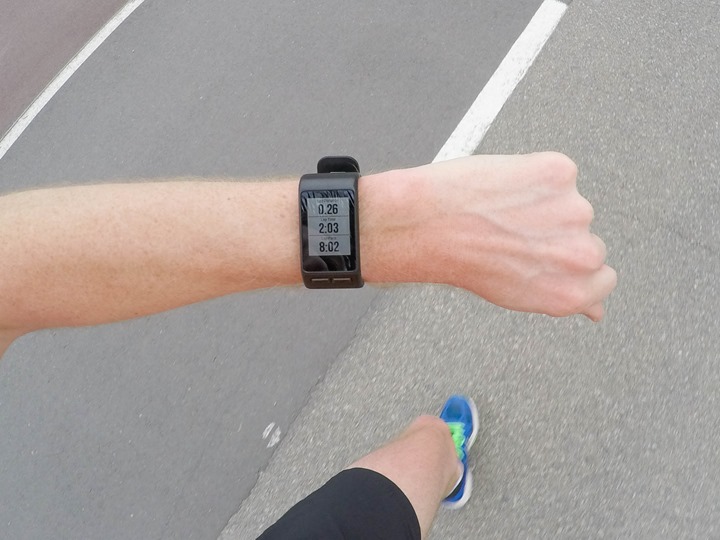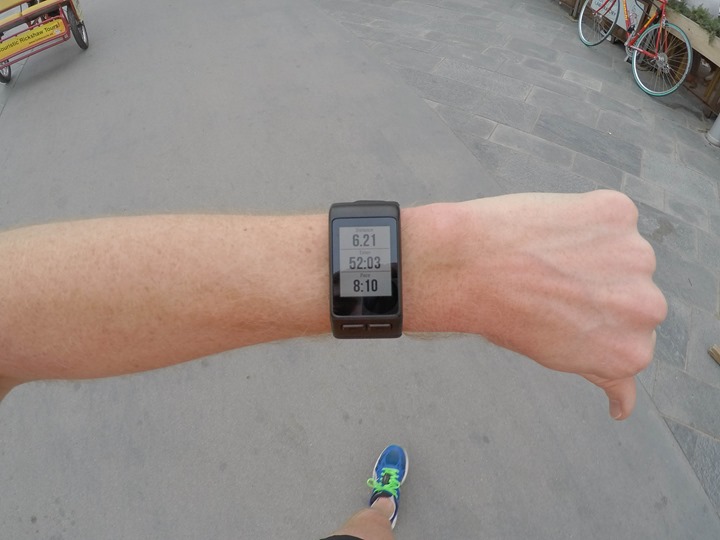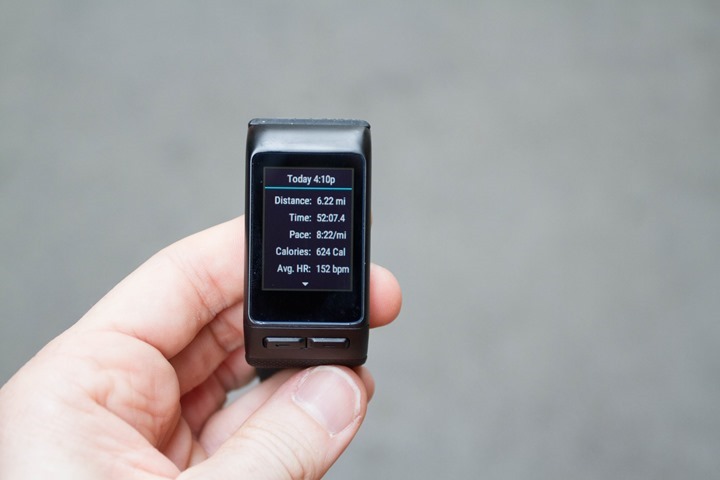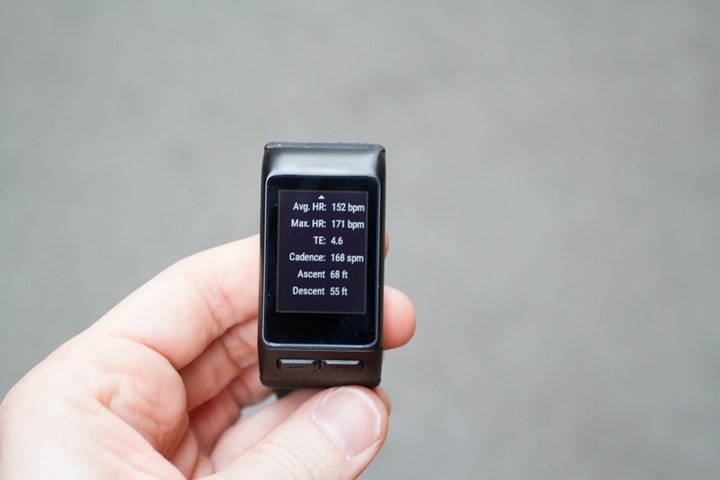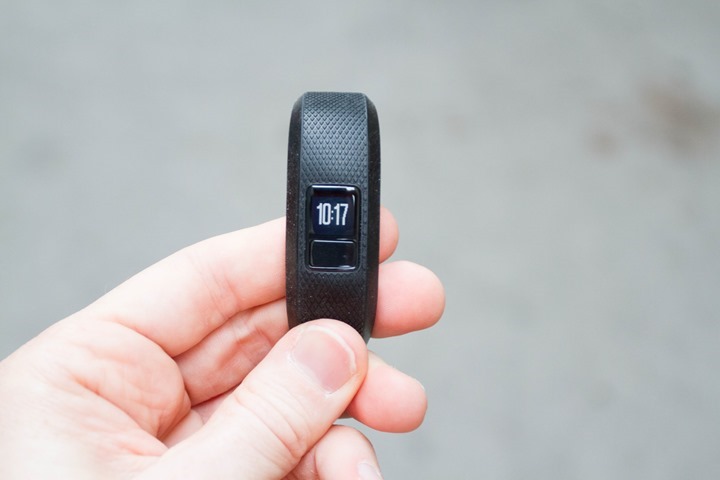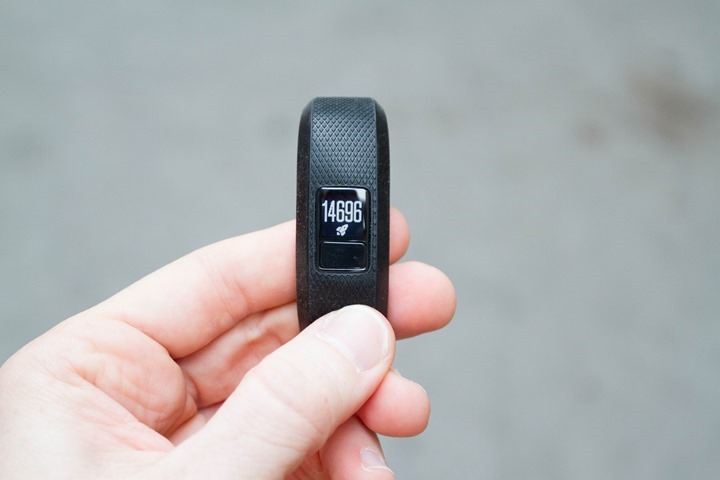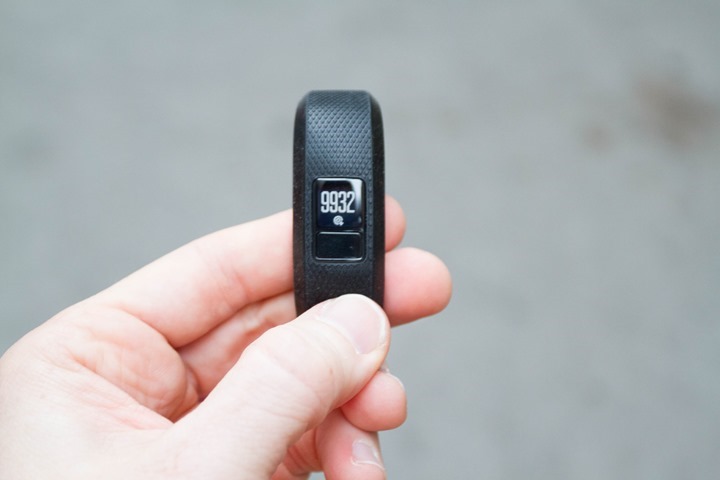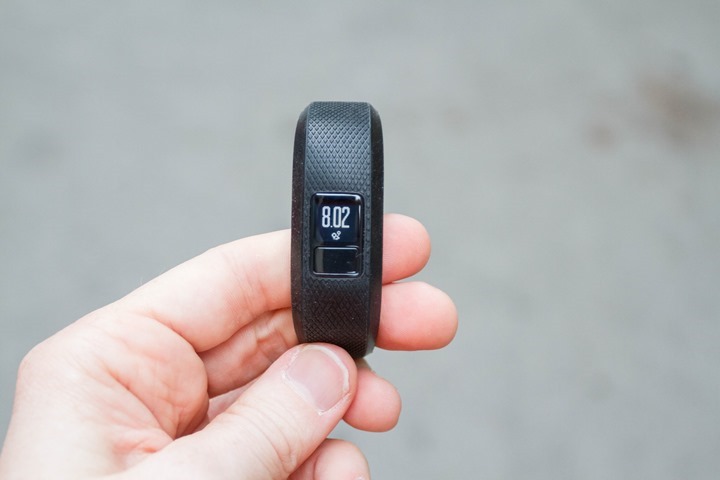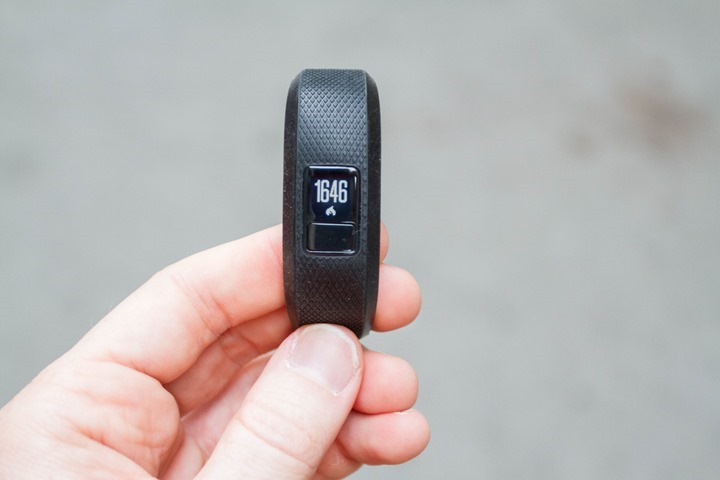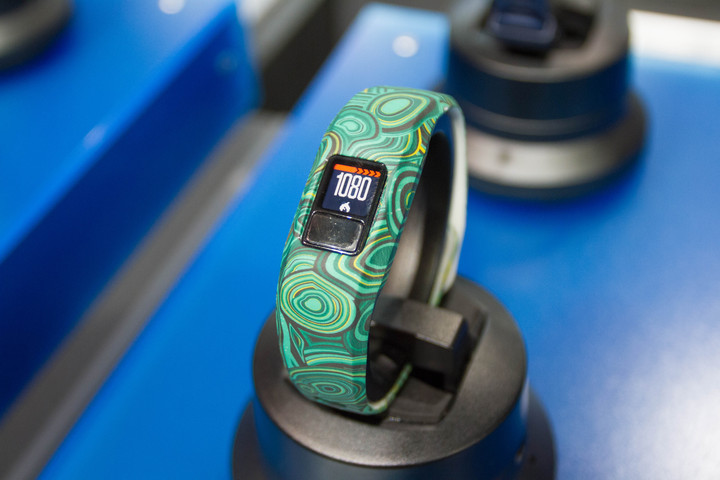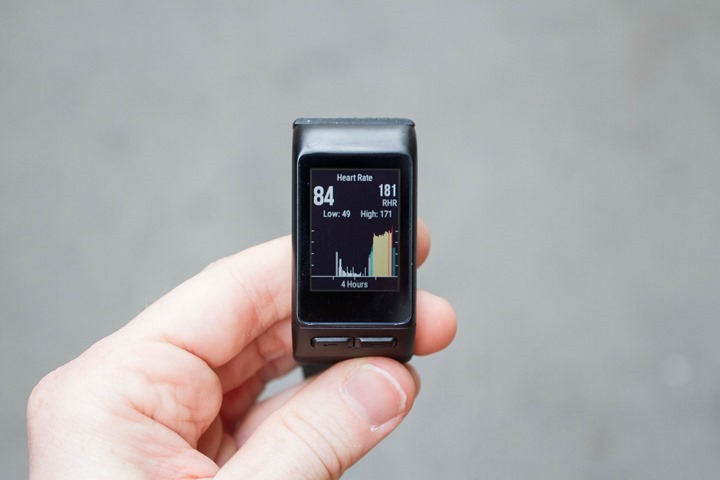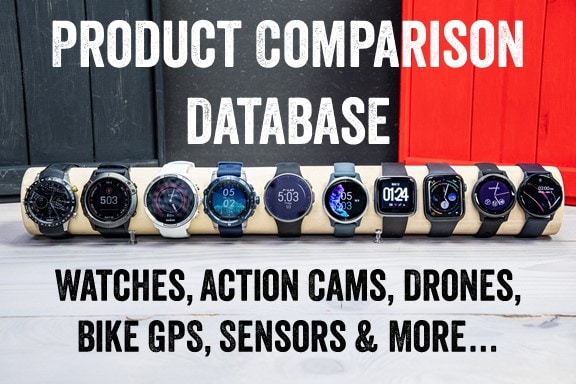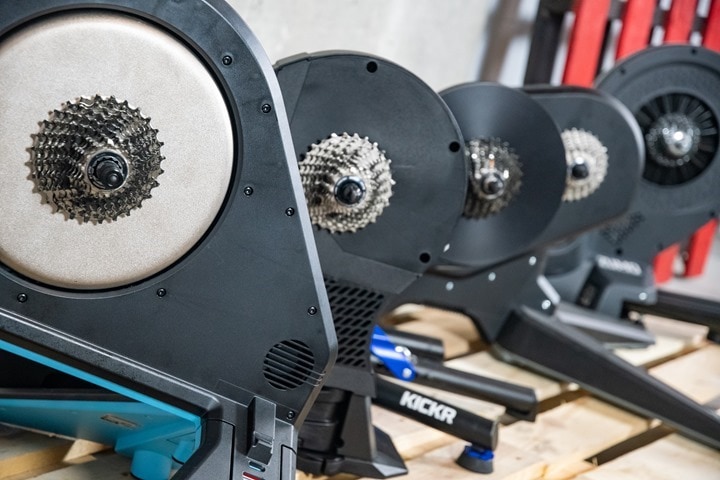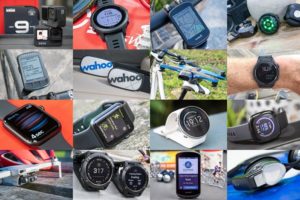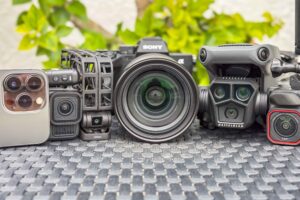Update June 2016: My in-depth review of the Vivoactive HR is now available. Swing on over to that post for all the details!
On Friday Garmin announced their new Vivoactive HR & Vivofit 3. As you’ll remember, my post was rather short and pretty limited in terms of content (just one pic!). I promised that come around Sunday, I’d get some hands-on time with the units and then post back on my thoughts.
And sure enough, that happened. I spent a few hours this afternoon with the new devices, including a 10K run. And overall, I came away impressed – in particular with the new Vivoactive HR. Let’s dive into things.
Oh, but first – the unit here is a beta unit. As such, there are both items in software and hardware that may and will differ from the final units. For example on the exterior there are finishes & labeling that aren’t yet on these units, and on the software side there are things not yet implemented. Release isn’t expected until the April or so timeframe.
The Basics:
There are two things that you’ll notice right away, one from the name, and the other just by looking at it. This isn’t your grandfather’s Vivoactive. Or even the one still on your wrist. First off as the name (HR) implies, it has an optical HR sensor built into the back of it. This uses Garmin’s internally developed ELEVATE sensor, the same sensor seen on the Forerunner 235, Fenix3 HR, and the Vivosmart HR.
Next, and most obvious is that the unit looks quite a bit different from the first Vivoactive. That first unit was all about making it small. Literally – that was the goal – to make the smallest GPS watch ever. And, they succeeded there. But size doesn’t always matter. And in this case, they tweaked the form factor a bit and I think the end result is actually a cleaner feeling unit.
Of course, it is bigger, there’s no doubt about that. And for some folks that will undoubtedly be a downside. It’s thicker than the previous Vivoactive, but it is less wide.
In a lot of ways, it kinda feels like the Fitbit Surge from a form factor standpoint. Sorta skinny-ish, but not quite as thick as the Surge (which gets thicker at one end). Like the Surge, it also feels quite comfortable to wear. Garmin has designed the watch band with pins to rotate inwards, allowing smaller wrists to wear it without that hard-plastic feel that some watch bands have.
Many have wondered about the display, and I’ve chatted with Garmin a bit more about that since Sunday. Technically speaking, the underlying display is actually the same as the Vivoactive. It’s simply just rotated sideways.
However, while it’s the same underlying display, they have tweaked some aspects to improve contrast. Also remember that while the display may be the same, factors like the touch screen which sits atop the display have changed – and that actually does impact visual qualities of the display below it. In this case, they changed the touch screen to a component that’s faster and more responsive, as well as improving the look of the display below it. Additionally, they added an ambient light sensor, so that the display’s brightness will change dynamically based on lighting conditions.
Said differently: It just seems more crisp than the original Vivoactive.
Whether that’s due to the actual hardware changes, or instead simply a much cleaner user interface (UI), is somewhat hard to tell. The new UI design of the Vivoactive HR makes it feel more like a FR920XT/Fenix3 (but simplified), and as such, it is visually cleaner than the original Vivoactive layout. For example, here’s the unit next to a Fenix3 HR. They look virtually identical from a contrast/crispness standpoint.
Of course, you’ll see plenty of shots of it on my wrist. But what about a smaller wrist? I present you The Girl (aka, my lovely wife). She’s 5’2″ tall with wrists that are 14cm (or 5.5 inches).. Here’s a few shots on her wrists. Note that the little clasp thing is the wrong clasp for this unit (beta, is oversized). Also note that this is the larger unit and not the smaller one. It’s all they had on-hand, but I know many of you wanted some shots nonetheless. The white watch you see is the older Vivoactive (original).
Now like the Vivoactive it contains all the Connect IQ app & daily activity tracking goodness of the past. Except now you get the 24×7 HR tracking functionality, as well as tracking of intensity minutes.
Furthermore, they’ve added in the ability to count flights of stairs with a new internal barometric altimeter. The stairs will show up right below the steps on the activity page:
And of course, they’ll show up in the Garmin Connect mobile app as well.
What’s that? You want a walk-through of all the features and how the touch screen works? Ok. Ask and you shall receive:

As you can see, the touch screen is pretty re-active, and the new user interface makes it a bit easier to navigate the watch and thus feels more reactive.
More Details:
Ok, so now that we’ve talked about some of the high-level changes, let’s dive into my list from Friday of what’s different at a more detailed level:
– Added Garmin Elevate optical HR sensor for workouts & 24/7 HR monitoring
– Added ability to re-broadcast the optical HR over ANT+ (so a Garmin Edge can see it)
– Added in floors climbed metric
– Added in Intensity Minutes
– Added in skiing/snowboard, paddle-board, and rowing apps
– Added in Auto Activity Detection (Running, Swimming, Cycling, Elliptical)
– Added support for basic swim HR recording via HRM-SWIM & HRM-TRI straps (or not apparently)
– Added ambient light sensor, allowing display to change brightness automatically
– Added support for wrist-turn detection to turn on backlight
– Added dedicated physical lap button, versus touch-button in original Vivoactive
– Slight increases to processor and RAM, making it faster
– Does NOT support HR using internal optical sensor while swimming (with no plans to enable)
– Increases GPS battery life up to 13hrs from 8hrs in original Vivoactive
– But decreased to 8 days always-on 24×7 mode battery (with HR though) from 3 weeks (no HR previously)
– Support of Varia Radar & Varia lights (does actually support Varia Vision after all)
Now to dig into some of these more deeply. First is that Garmin Elevate optical HR sensor. That’s the same sensor found in previous units, and as such, expect performance to roughly be the same. However, Garmin has seemingly made improvements since the FR235 & Vivosmart HR came out. For example I’m seeing better performance now with the Elevate sensor on the Fenix3 HR than I did back in November/December with the other units. I suspect some of those tweaks have also been ported into firmware updates for the FR235/Vivosmart HR already.
Like the Vivosmart HR/FR235/Fenix3HR, you can re-broadcast the signal from the Vivoactive HR to other devices. This allows you to then pick it up on another ANT+ device, such as a Garmin Edge computer. Note that it doesn’t re-broadcast over Bluetooth Smart, just ANT+.
However, unlike the Vivosmart HR, you aren’t forced to use the optical HR sensor. You can easily pair an ANT+ heart rate strap to the unit, or any other ANT+ sensor.
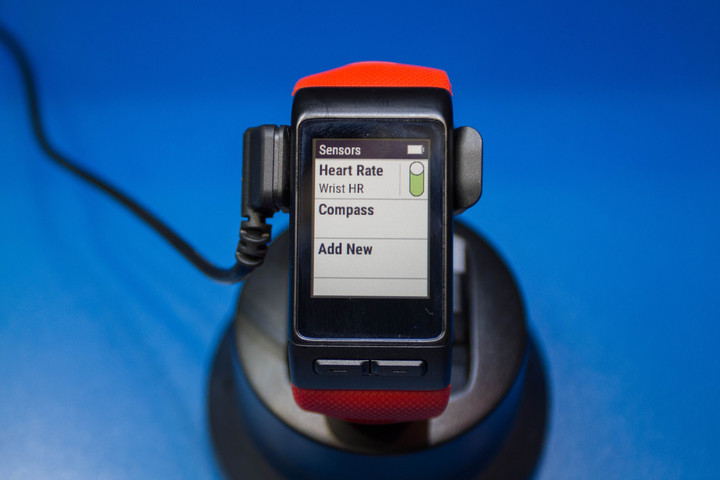
At present it supports the ANT+ Heart Rate straps, ANT+ Cycling Speed/Cadence sensors, ANT+ Running Footpod, and the ANT+ Tempe temperature sensor. It does NOT support ANT+ power meters, however you can get ANT+ power meter support through some Connect IQ apps already (but you can’t record that data quite yet until the next Connect IQ software update is released).
When it comes to additional in-box activity modes/apps, you can choose from a huge listing of apps. Pretty much everything you’d find on a Garmin FR920XT, except for openwater swimming. You can also add activity modes at the bottom too (as long it isn’t openwater swimming).
Note that on the Vivoactive HR, the recording rate is set at 1-second during workouts (but variable in 24×7 mode) – this being an upgrade from the original Vivoactive. Also note that while the Vivoactive HR does have a pool swimming mode, you can’t use the optical HR sensor during swimming to capture your heart rate. Garmin has no plans to enable that either in the Vivoactive HR (it’s not currently enabled on the Fenix3 HR either). While you can use the HRM-TRI and HRM-SWIM to capture HR data above water, it won’t do it below water.
Note that while using those straps though with the Vivoactive HR for running, you will NOT get Running Dynamics data. The unit does not capture Running Dynamics, even if using an HRM-RUN or HRM-TRI strap.
The main reason is that it’s a simpler running watch. The unit has three data pages, each of which can be customized with two or three pieces of information (but not one).
You can dive into the menus and select all assortment of metrics, which at a quick glance seem to be on par with those found on the FR230/235 watches.
Like many of the other newer Garmin running/multisport watches, you’ve now got new widgets related to your last workouts. There is both a last workout widget, as well as a ‘My Day’ widget.
Meanwhile, unlike the other Garmin running watches – the Vivoactive HR is the first wearable to connect to Garmin’s Varia lineup. This includes the Varia radar and Varia lights. And (and this is a change from Friday), it WILL include the ability to connect to Varia Vision (that’s the heads up display). I’ve asked for clarification on whether or not the Fenix3 or FR920XT will get such an update, given they are 2-3 times the price of the Vivoactive HR.
Finally, a few other random things that didn’t fit anywhere else:
– You can invert the color scheme from white on black, to black on white text (plus the dabs of color here and there)
– It can read from HRM-TRI/HRM-RUN straps, but does NOT recording Running Dynamics, just the baseline heart rate
– The barometric altimeter in the unit is used for both floor counting, as well as during sport/activity
– For starting/stopping, you’ll use the lower right button. For laps, you can enable the manual lap function (auto laps are the default). That then allows the left button to become your lap button (as seen below).
– You can do basic navigation, such as saving a point to the navigation menu, and then using simple electronic compass navigation to get back to it.
If I think of more random things, I’ll plop them in this section.
A Run With It:
Ok – so how about a quick run with it? I got a chance to go for a 10K run with the unit along the waterfront later in the afternoon. It’d be a simple out and back route, at a relatively constant pace. The pace being constant because my running handler just got off a flight from the US about 2 hours prior, and I had run 13 miles just 2 hours prior. Thus, neither of us were looking for an interval workout.
In any case, off we set out. I was mostly interested in how the watch handled on pace and heart rate, as well as just general use like the touch screen and distance accuracy.
Now, there was only one itty bitty problem: As I was wearing a chest strap to visually compare readings to, the unit quietly paired itself to said strap. A ‘feature’ I only noticed about 5 minute after our run ended. To be fair, this feature has actually been on other units like the FR235 as well (but not the Fenix3 HR) – it’s just that normally on my test units I remember to pair and then disable the HR straps first so this doesn’t happen.
On the flip side, since it was a beta unit that’s likely 1-2 months away from release, I’m not going to fret too much. And further, we already know what the Garmin Elevate optical HR sensor acts like (and you’ll see much more of that recent data in a few days as part of my Garmin Fenix3 HR In-Depth Review).
So, as for pace accuracy – things seemed very stable there. You can see that in this short running clip I put together. Pace is on the bottom on two of the screens:

And the same goes for the touch screen, it worked well. Each time it reacted without issue. Granted, it was not raining out (thus not wet), so that’s always still a factor. But Garmin has a pretty stable track record there of touch screens and wetness, so I’d be surprised if something changed. But that’d be something I’d cover in my in-depth review (Which, is a good time to remind, this isn’t a review. It’s simply a preview of just one run).
Afterwards, I got the usual post-run PR’s. Since this was a ‘new’ unit, everything was a PR. And then following that I got summary information about my run:
Overall, the unit felt pretty nice on the wrist, and easy to read. It feels like an improvement over the Vivoactive – simply because of the new user interface. But also because of the integrated optical HR sensor.
Comparison Charts:
I’ve added the Vivoactive HR to the DCR Comparison Tool/Database, allowing you to quickly compare it to other products – most notably the FR230/FR235 and original Vivoactive. As for how you might choose between the FR230/235 and the Vivoactive HR?
Well, here’s a simplified primer:
You’d get the FR230 ($249) if: You didn’t care about optical HR (or 24×7 HR), but wanted more advanced running features like the custom workout creator, recovery time, downloading training plans, and four data fields (and more data pages). Same goes for the Virtual Partner type features, which the Vivoactive HR lacks.
You’d get the FR235 ($329) if: You did care about optical HR (and 24×7 HR), and wanted all of the things I just listed for the FR230 section. Remember that the FR235 is identical to the FR230, it just also has the optical HR sensor.
You’d get the Vivoactive HR ($249) if: You also wanted other sports –especially pool swimming, but also stand up paddle boarding, skiing or golf (all of which the FR230/235 lack). If you don’t need more advanced run metrics as seen above on the FR230/235, or if you just want a simpler user interface. You want the ‘Floors climbed’ metric really bad.
Obviously, there are lots of little quirks as to why someone might one one versus the other – but those are the main reasons.
Here’s the table. Remember, you can create your own comparison table using the product comparison tool here.
| Function/Feature | Garmin Vivoactive HR | Garmin Vivoactive | Garmin Forerunner 230 | Garmin Forerunner 235 |
|---|---|---|---|---|
| Copyright DC Rainmaker - Updated May 14th, 2021 @ 3:16 pm New Window | ||||
| Price | $249 | $169 (on sale) | $249 | $249 |
| Product Announcement Date | Feb 19th, 2016 | January 5th, 2015 | Oct 21st, 2015 | Oct 21st, 2015 |
| Actual Availability/Shipping Date | Q2 2016 | March 2015 | November 2015 | November 2015 |
| GPS Recording Functionality | Yes | Yes | Yes | Yes |
| Data Transfer | USB, BLUETOOTH SMART | USB, BLUETOOTH SMART | USB, Bluetooth Smart | USB, Bluetooth Smart |
| Waterproofing | 50 meters | 50 meters | 50 Meters | 50 Meters |
| Battery Life (GPS) | 13 hours GPS on | 10 hours GPS on | 16 hours | Up to 16 hours |
| Recording Interval | Smart Recording | Smart Recording (Variable) | 1-second & Smart | 1-second & Smart |
| Alerts | Vibrate/Visual | Vibrate/Visual | VIBRATE/SOUND/VISUAL | VIBRATE/SOUND/VISUAL |
| Backlight Greatness | Good | Good | Good | Good |
| Ability to download custom apps to unit/device | Yes | Yes | Yes | Yes |
| Acts as daily activity monitor (steps, etc...) | Yes | Yes | Yes | Yes | Music | Garmin Vivoactive HR | Garmin Vivoactive | Garmin Forerunner 230 | Garmin Forerunner 235 |
| Can control phone music | Yes | Yes | Yes | Yes |
| Has music storage and playback | No | No | No | No | Connectivity | Garmin Vivoactive HR | Garmin Vivoactive | Garmin Forerunner 230 | Garmin Forerunner 235 |
| Bluetooth Smart to Phone Uploading | Yes | Yes | Yes | Yes |
| Phone Notifications to unit (i.e. texts/calls/etc...) | Yes | Yes | Yes | Yes |
| Live Tracking (streaming location to website) | Yes | Yes | Yes | Yes |
| Group tracking | No | |||
| Emergency/SOS Message Notification (from watch to contacts) | No | No | No | No |
| Built-in cellular chip (no phone required) | No | No | No | No | Cycling | Garmin Vivoactive HR | Garmin Vivoactive | Garmin Forerunner 230 | Garmin Forerunner 235 |
| Designed for cycling | Yes | Yes | Yes | Yes |
| Power Meter Capable | With some Connect IQ apps (but cannot record data) | With some Connect IQ apps (but cannot record data) | WITH SOME CONNECT IQ APPS (BUT CANNOT RECORD DATA) | WITH SOME CONNECT IQ APPS (BUT CANNOT RECORD DATA) |
| Speed/Cadence Sensor Capable | Yes | Yes | Yes | Yes |
| Strava segments live on device | No | No | No | No |
| Crash detection | No | Running | Garmin Vivoactive HR | Garmin Vivoactive | Garmin Forerunner 230 | Garmin Forerunner 235 |
| Designed for running | Yes | Yes | Yes | Yes |
| Footpod Capable (For treadmills) | YES (Also has INTERNAL ACCELEROMETER) | YES (Also has INTERNAL ACCELEROMETER) | YES (Also has INTERNAL ACCELEROMETER) | YES (Also has INTERNAL ACCELEROMETER) |
| Running Dynamics (vertical oscillation, ground contact time, etc...) | No | No | No | No |
| VO2Max Estimation | No | No | Yes | Yes |
| Race Predictor | No | No | Yes | Yes |
| Recovery Advisor | No | No | Yes | Yes |
| Run/Walk Mode | Yes | Yes | Yes | Yes | Swimming | Garmin Vivoactive HR | Garmin Vivoactive | Garmin Forerunner 230 | Garmin Forerunner 235 |
| Designed for swimming | Yes | Yes | No (protected though just fine) | No (protected though just fine) |
| Openwater swimming mode | No | No | N/A | N/A |
| Lap/Indoor Distance Tracking | Yes | Yes | N/A | N/A |
| Record HR underwater | No | No | N/A | N/A |
| Openwater Metrics (Stroke/etc.) | No | No | N/A | N/A |
| Indoor Metrics (Stroke/etc.) | Yes | Yes | N/A | N/A |
| Indoor Drill Mode | No | No | N/A | N/A |
| Indoor auto-pause feature | No | No | N/A | N/A |
| Change pool size | Yes | Yes | N/A | N/A |
| Indoor Min/Max Pool Lengths | 17M/18Y TO 150Y/M | 17M/18Y TO 150Y/M | N/A | N/A |
| Ability to customize data fields | Yes | Yes | N/A | N/A |
| Captures per length data - indoors | Yes | Yes | N/A | N/A |
| Indoor Alerts | Yes | Yes | N/A | N/A | Triathlon | Garmin Vivoactive HR | Garmin Vivoactive | Garmin Forerunner 230 | Garmin Forerunner 235 |
| Designed for triathlon | No | No | No | No |
| Multisport mode | No | No | No | No | Workouts | Garmin Vivoactive HR | Garmin Vivoactive | Garmin Forerunner 230 | Garmin Forerunner 235 |
| Create/Follow custom workouts | No | No | Yes | Yes |
| On-unit interval Feature | No | No | Yes | Yes |
| Training Calendar Functionality | No | No | Yes | Yes | Functions | Garmin Vivoactive HR | Garmin Vivoactive | Garmin Forerunner 230 | Garmin Forerunner 235 |
| Auto Start/Stop | Yes | Yes | Yes | Yes |
| Virtual Partner Feature | No | No | No | No |
| Virtual Racer Feature | No | No | No | No |
| Records PR's - Personal Records (diff than history) | Yes | Only on Garmin Connect | Yes | Yes |
| Tidal Tables (Tide Information) | No | No | No | No |
| Weather Display (live data) | Yes | Via Connect IQ app | Yes | YEs | Navigate | Garmin Vivoactive HR | Garmin Vivoactive | Garmin Forerunner 230 | Garmin Forerunner 235 |
| Follow GPS Track (Courses/Waypoints) | No | No | No | No |
| Markers/Waypoint Direction | Yes (to pre-saved spots) | No | No | No |
| Routable/Visual Maps (like car GPS) | No | No | No | No |
| Back to start | Yes | Yes | Yes | Yes |
| Impromptu Round Trip Route Creation | No | No | No | No |
| Download courses/routes from phone to unit | No | No | No | No | Sensors | Garmin Vivoactive HR | Garmin Vivoactive | Garmin Forerunner 230 | Garmin Forerunner 235 |
| Altimeter Type | Barometric | GPS | GPS | GPS |
| Compass Type | Magnetic | GPS | N/A | N/A |
| Optical Heart Rate Sensor internally | Yes | No | No | YEs |
| Heart Rate Strap Compatible | Yes | Yes | Yes | Yes |
| ANT+ Heart Rate Strap Capable | Yes (Can also broadcast ANT+ HR) | Yes | Yes | Yes |
| ANT+ Speed/Cadence Capable | Yes | Yes | Yes | Yes |
| ANT+ Footpod Capable | Yes | Yes | Yes | Yes |
| ANT+ Power Meter Capable | No | No | No | No |
| ANT+ Lighting Control | Yes | No | No | NO |
| ANT+ Bike Radar Integration | Yes | No | No | NO |
| ANT+ Trainer Control (FE-C) | No | No | No | NO |
| ANT+ Remote Control | YES FOR GARMIN VIRB | Yes for Garmin VIRB | YES FOR GARMIN VIRB | YES FOR GARMIN VIRB |
| ANT+ eBike Compatibility | No | No | No | NO |
| ANT+ Gear Shifting (i.e. SRAM ETAP) | No | No | No | |
| Shimano Di2 Shifting | No | No | No | NO |
| Bluetooth Smart HR Strap Capable | No | No | No | NO |
| Bluetooth Smart Speed/Cadence Capable | nO | no | No | NO |
| Bluetooth Smart Footpod Capable | No | No | No | NO |
| Bluetooth Smart Power Meter Capable | No | No | No | NO |
| Temp Recording (internal sensor) | Sorta (Available only in Skiing/SUP) | No | No | NO |
| Temp Recording (external sensor) | Yes | Yes (Tempe) | YES (TEMPE) | YES (TEMPE) | Software | Garmin Vivoactive HR | Garmin Vivoactive | Garmin Forerunner 230 | Garmin Forerunner 235 |
| PC Application | Garmin Express - Windows/Mac | Garmin Express | Garmin Express | Garmin Express |
| Web Application | Garmin Connect | Garmin Connect | Garmin Connect | Garmin Connect |
| Phone App | iOS/Android/Windows Phone | iOS/Android/Windows Phone | iOS/Android/Windows Phone | iOS/Android/Windows Phone |
| Ability to Export Settings | No | No | No | No | Purchase | Garmin Vivoactive HR | Garmin Vivoactive | Garmin Forerunner 230 | Garmin Forerunner 235 |
| Amazon | Link | Link | Link | Link | DCRainmaker | Garmin Vivoactive HR | Garmin Vivoactive | Garmin Forerunner 230 | Garmin Forerunner 235 |
| Review Link | Link | Link | Link | Link |
Trying to compare other watches? Just swing over to the product comparison tool and create your own comparison charts there.
And the Vivofit 3:
Now it’s not that I’m trying to ignore the Vivofit 3, but rather, it’s just a much simpler device. The functionality ultimately isn’t terribly different than the previous Vivofit 2, it’s just that it looks different. As a recap, here’s what’s different from the Vivofit 2:
– Added in Auto Activity Detection (Running, Swimming, Cycling, Elliptical)
– Added in Intensity Minutes metric
– New square screen, includes new analog clock face, different UI designs
– New styled Vivofit 3 bands
And, here’s what stayed the same:
– Can still connect to ANT+ HR strap for non-swim activities
– Can still manually create a standalone workout activity
And here’s what went away:
– Not compatible with Vivofit1/Vivofit2 accessory bands
So, as you can see – it’s fairly straightforward. To look at some of these screens, we’ll just iterate through and press the button a few times. For example, here’s the steps:
Then remaining (or overage in this case) for your step goal:
Followed by step distance:
And then calories:
No doubt the main difference here aside from the addition of intensity minutes, was the now-square screen, and the new band options. Here’s what a few of those newer and more stylish band options look like:
The nice piece being that the unit keeps the same fairly low price of $99, making it pretty competitive in the marketplace today.
Summary:
Phew – lots of details!
I think Garmin likely has a bit of a winner on their hands with respect to the Vivoactive HR. Obviously, it’s too soon to know if there are any hidden bugs that cause issues that would be more apparent in a longer term review (which is probably a few months away). But they seemed to have really cleaned up the Vivoactive HR compared to the original Vivoactive (which was still pretty good). This feels like a more rounded watch that navigates easier with the front-facing buttons.
The price point is very strong at $249, especially compared to the Fitbit Surge in the same ballpark, or even the Fitbit Blaze that’s a bit cheaper at $199. Additionally, I expect we’ll see the Apple Watch (Sport) back at $249 again soon – and for the athlete, this will likely be a far better option that’s more accurate and more well rounded given it has GPS on-board where the Apple Watch doesn’t.
Stay tuned for an in-depth review around the time the unit starts shipping. As always, since this was just a few hours with the unit, it may very well suck when it comes to shipping. Or, it may be even better. That’s just the way first looks work with pre-production devices.
With that – thanks for reading!
April 25th 2016 Update with new video added!
I’ve now got a final production unit, here’s a quick un-boxing video along with some more on size comparisons between the Vivoactive (original) and the Fitbit Surge:

Finally! You can now order the new Vivoactive HR and Vivofit3 units from Clever Training. In doing so you support the site here, I appreciate it!


